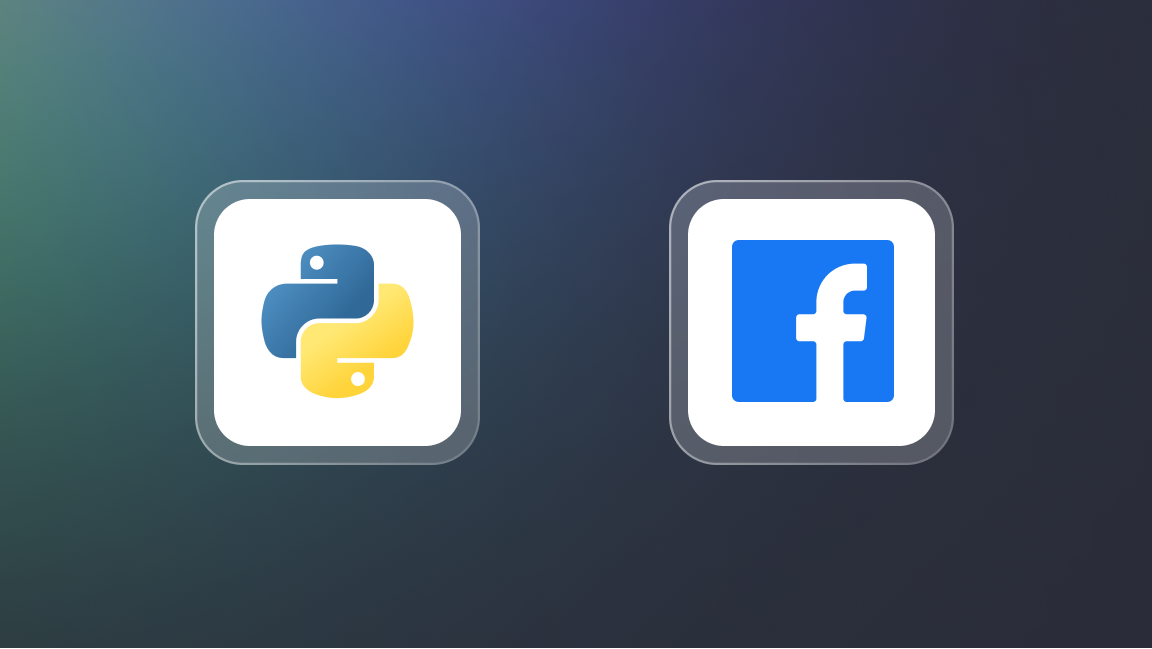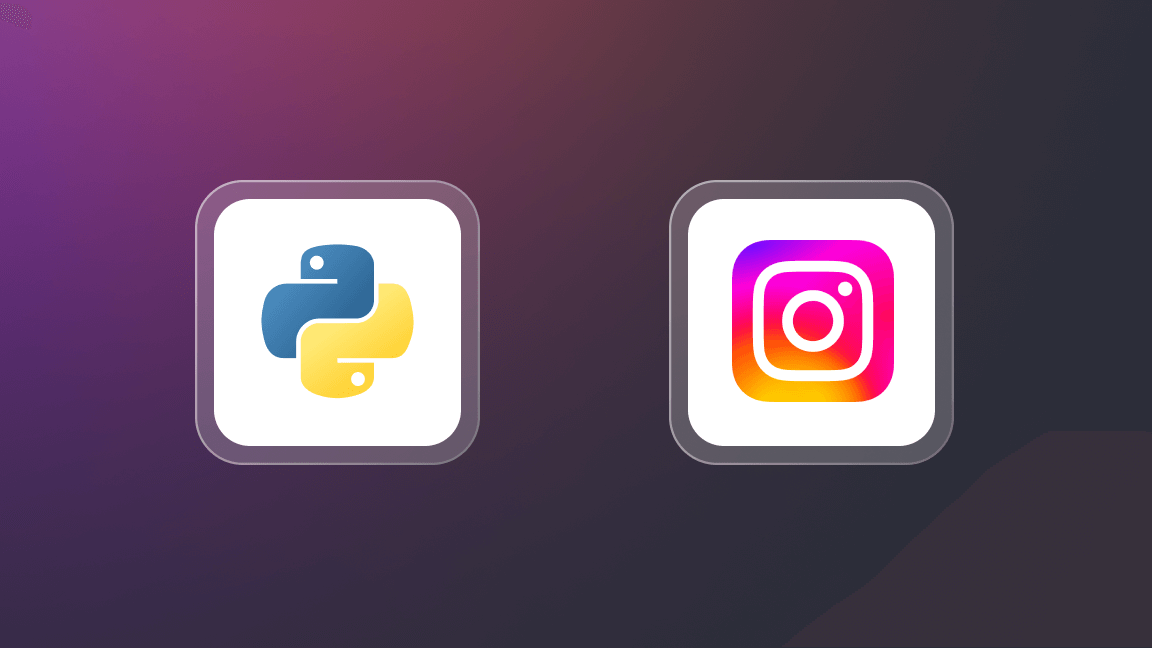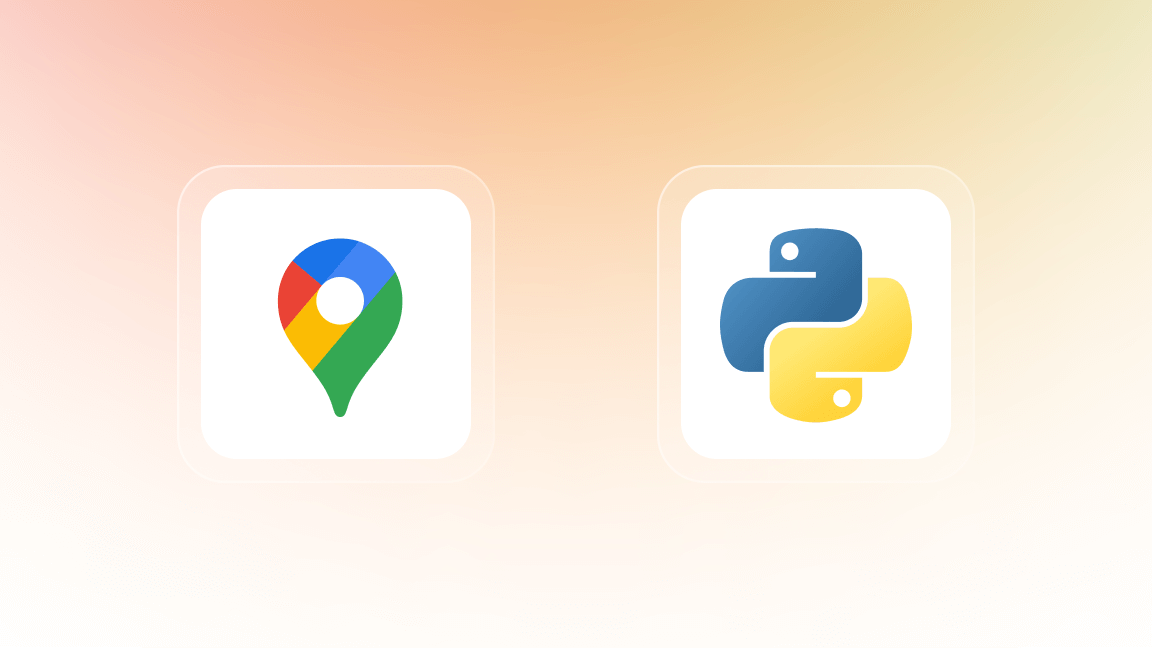Web scraping is even hotter than it already used to be now that the whole world knows that the various AIs and LLMs out there were trained by ingesting scraped data. And in 2025, there are some very solid choices for web scraping APIs.
Let’s look at just 10 of the best to help you decide which is right for you.
Top 10 web scraping APIs you should try
1. Apify
We’ll put our own product first because we believe it’s the best web scraping API you can use to extract website data in 2025. Try it out, and we think you’ll agree 😄
The Apify API facilitates scalable and efficient data extraction and management, streamlining the process of collecting information from websites and improving data reliability. It also provides access to a huge library of pre-built scrapers (called Apify Actors). Each Apify Actor is effectively a web scraping API that targets popular websites. They can be used with the default settings or as a starting point for custom scraping projects. Apify Store offers thousands of different scraping tools.
The Apify API is designed to handle large volumes of data and a vast number of web pages without issues. The data can be stored and exported in different formats, such as Excel, CSV, JSON, and XML. It also includes utilities to allow developers to schedule, monitor, and manage long-running scraping jobs. Apify Proxy is completely integrated into the platform and runs seamlessly in the background for most scraping tasks. Apify was designed by devs for devs, so you can fetch from a repository, push code from your local computer, or use our online code editor.
Apify scrapers can use all popular libraries, including Python and JavaScript frameworks and toolsets such as Scrapy, Selenium, Playwright, and Puppeteer.
Apify also maintains a state-of-the-art open-source web scraping and browser automation library for Node.js called Crawlee.
- Flexible and customizable
Apify allows users to define custom scraping tasks using either JavaScript or Python and offers a wide range of pre-built scrapers, enabling flexibility in data extraction.
- Extensive library of ready-to-use scrapers
Apify Store offers a variety of free and paid pre-built scraping solutions that can be easily utilized to scrape data from popular websites without writing custom code.
- Full-featured cloud-based infrastructure
Apify users can enjoy the convenience of a secure cloud hosting infrastructure that eliminates the need for separate hosting solutions. This allows for easy storage, management, and sharing of software written in any programming language. In addition, Apify provides a comprehensive set of features for scheduling data extraction tasks and monitoring performance, ensuring a seamless and efficient web scraping experience.
- Pricing options
Apify provides a range of pricing plans catering to different needs and project sizes. This includes a generous free tier, as well as various subscription options, making it well-suited for both small and large-scale web scraping projects. Apify also supports the use of web scraping education with a special discount for universities and researchers.
- Forever-free plan
Apify follows a freemium model, granting users immediate access to all its features, such as proxies and task scheduling. The only restriction is that free users are limited to a maximum monthly credit usage of $5.
- Developer community
Apify has a large developer community active on Discord, which makes it easier for users to find solutions to their problems and connect with other like-minded web scraping enthusiasts.
- Multiple data formats
Apify supports various data formats, allowing users to obtain the extracted data in formats like JSON, CSV, or HTML, making it versatile for different data processing needs.
- Integrations
Apify offers an impressive range of pre-built external integrations, giving users access to a vast selection of services like Gmail, Google Drive, Make, Zapier, and more. By utilizing the Apify API and running scrapers on their platform, users can leverage these integrations for enhanced functionality and productivity.
- Learning curve
While the Apify API offers comprehensive functionality, it may have a steeper learning curve for users who are new to web scraping or API integrations.
- Data quality control
As Apify allows users to define their own scraping tasks, the responsibility for ensuring data quality and accuracy rests on the user, which may require additional effort and expertise.
However, it's worth noting that Apify also offers fully-managed enterprise solutions where the responsibility for ensuring data quality is taken care of by Apify itself.

2. Oxylabs
Oxylabs takes a different approach from Apify in that they have several specific APIs for scraping different categories, such as SERP Scraper API for search engine results pages, E-Commerce Scraper API, Real Estate Scraper API, and the more generic Web Scraper API. Oxylabs has a pretty good proxy service, and in recent years they have been increasingly focused on their proxies.
- Vast proxy network
Oxylabs has an extensive proxy network, offering a wide range of IP addresses from different locations.
- Feature set
The Oxylabs API offers various useful features, such as rotating proxies, session persistence, geotargeting, and CAPTCHA solving.
- Data quality and accuracy
Oxylabs places a strong emphasis on data quality, ensuring that the information extracted from websites is reliable and accurate.
- Cost
The Oxylabs API tends to be more expensive compared to some other web scraping solutions, which may be a factor for users with budget constraints. Oxylabs’ pricing starts at $49 per month, but this only grants access to one scraper API. To use all three of their scraping APIs, you’d need to pay $149 per month.
- Limited flexibility
The Oxylabs API imposes limitations on customizing scraping jobs according to specific user requirements. This lack of flexibility can be inconvenient for experienced users who prefer greater control over customizing their scraping tasks.
- Limited free tier
Oxylabs’ free trial lasts 7 days and limits you to 5,000 API requests. After the free trial, you pay a monthly fee for a set amount of requests and other relevant resources, such as proxy rotation and access to specific APIs.
3. ScrapingBee
ScrapingBee’s API handles things such as rotating proxies, data extraction, headless browsers, and solving CAPTCHAS. ScrapingBee has a Stealth Proxy in beta that includes a new pool of proxies that the company claims should be enough to scrape even the hardest-to-scrape websites.
- Easy to use
ScrapingBee’s API is known for its simplicity and user-friendly interface, making it easy for developers with varying levels of web scraping expertise to use it.
- CAPTCHA handling
ScrapingBee offers built-in CAPTCHA handling, automating the process of solving CAPTCHAs encountered during scraping.
- IP rotation
The API provides automatic IP rotation, ensuring a higher level of anonymity and reducing the risk of IP blocking or detection.
- Pricing options
ScrapingBee provides a range of pricing plans, including a generous free tier and affordable packages, making it a cost-effective choice.
- Limited customization
While ScrapingBee’s API is easy to use, as there is no integrated cloud solution, it may have limited flexibility for customizing scraping tasks, which may be a drawback for more advanced users with specific requirements.
- No cloud hosting or scheduling
ScrapingBee differs from full-stack platforms like Apify and Zyte by not offering a cloud hosting infrastructure to complement its web scraping services. This means that users are responsible for finding their own hosting solutions. It also doesn't provide the ability to schedule web scraping jobs.
4. Zyte
Zyte was formerly known as ScrapingHub. It prides itself on three web scraping cornerstones: reach, simplicity, and reliability. The Zyte platform heavily relies on the widely-used open-source Python web scraping framework called Scrapy. Depending on your familiarity with the framework, this can be seen as either an advantage or a disadvantage.
- Scrapy framework
Zyte provides the powerful Scrapy framework, which is widely recognized and favored by experienced web scrapers for its flexibility and advanced scraping capabilities.
- AutoExtract
Zyte offers AutoExtract, a feature that automatically extracts structured data from websites, saving time and effort in data extraction.
- Cloud-based infrastructure
Zyte provides a cloud hosting infrastructure, allowing users to conveniently store and manage their Scrapy Spiders without the need for separate hosting solutions.
- Smart proxy manager
With Zyte’s smart proxy manager, users can benefit from an automated and intelligent proxy rotation system. This feature allows for seamless and efficient handling of IP addresses, ensuring a high level of anonymity and minimizing the risk of IP blocking or detection.
- Learning curve
Utilizing the Scrapy framework and advanced features of Zyte may require a steeper learning curve for users who are new to web scraping or the Scrapy ecosystem.
- Pricing
Zyte's pricing structure is very complex. Each product offering has a different pricing scheme, and these offerings often overlap, potentially leading to higher costs as you pay for multiple products while trying to determine the total cost for your scraping solution.
6. Bright Data
Bright Data provides a range of offerings to meet the data extraction needs of businesses and individuals. These include readily available datasets scraped from popular websites, as well as a comprehensive suite of web scraping services. Their solutions enable reliable and efficient collection of structured data for various purposes such as market research and competitive analysis. Bright Data equips users with access to a vast proxy network, advanced data collection tools, and strong support, empowering them to streamline their web scraping projects effectively.
- Extensive proxy network
Bright Data boasts a vast and diverse proxy network, allowing users to scrape data from multiple locations and sources while maintaining anonymity and avoiding IP blocking.
- Scalability and speed
Bright Data's infrastructure is designed to handle high-volume scraping requirements, ensuring fast and efficient data extraction even on large-scale projects.
- Advanced data collection tools
Bright Data offers a range of features such as CAPTCHA solving, JavaScript rendering, and handling dynamic content, enabling users to tackle complex scraping tasks effectively.
- Pricing
Bright Data's pricing is considerably above the market average, with 1,000 records costing as much as $7 on the Pay As You Go plan.
- Customization limitations
Bright Data lets you build your own scrapers but restricts you to using their Web IDE. You must pay separately for local development.
7. Diffbot
Diffbot has a range of different APIs aimed at doing different things, but the two that are most interesting for a web scraping dev are Analyze API and Extract API. These use a relatively automated process where the Diffbot Analyze API visually analyzes a web page, identifies its page type, and determines which Diffbot extraction API (if any) is appropriate. The different page-type APIs include article API, product API, image API, and more. There’s also a custom API that is probably more interesting for developers. Don’t be put off by its point-and-click interface, as it can be used programmatically via its API.
- Automatic extraction
Diffbot utilizes AI-powered algorithms to automatically extract structured data from web pages, eliminating the need for manual parsing and reducing development time.
- Accuracy and reliability
Diffbot's advanced algorithms and machine learning techniques help ensure accurate data extraction, reducing the risk of errors and inconsistencies in the scraped data.
- Developer-friendly APIs
Diffbot provides developer-friendly APIs and SDKs, making it easy to integrate and automate web scraping tasks in different programming languages.
- Cost
Bulk extraction and crawling - necessary for scraping at scale - are absent from lower-tier options. They are only available on higher-tier plans, starting at $899/month.
- Limited customization
While Diffbot offers powerful automated extraction capabilities, it has limitations in terms of customization options for highly specific or complex web scraping requirements.
8. WebScrapingAPI
WebScrapingAPI offers ready-to-use web scraping APIs tailored for specific sites, like the Google SERP API and Amazon API, as well as its main general-purpose solution, the “WebScraping API."
- Simplified web scraping
WebScrapingAPI services provide a simple solution for web scraping by automatically handling common web scraping challenges such as browsers, proxies, and JavaScript rendering.
- High scalability
WebScrapingAPI offers high scalability, allowing developers to handle large-scale web scraping tasks efficiently and without worrying about infrastructure limitations.
- Quick integration
WebScrapingAPI provides easy integration through well-documented APIs, enabling developers to seamlessly incorporate web scraping functionalities into their applications.
- Proxy support
WebScrapingAPI offers built-in proxy support, allowing developers to manage and rotate IP addresses, ensuring better anonymity and avoiding IP blocking.
- Pricing structure
WebScrapingAPI splits its products into separate pricing plans, which can be cost-effective if you only need one service. However, if you need multiple solutions, the costs can add up quickly. For example, using their WebScrapingAPI, SERP API, and Amazon API would cost $19, $29, and $59 per month at the lowest tiers, totaling a significant monthly expense. This can be a downside compared to other services that offer multiple features under a single pricing plan, which is often simpler and more affordable.
- Customization limitations
Like most closed-source API services, WebScrapingAPI simplifies the web scraping process but comes with limitations in customization compared to building your own scraper from scratch. While this simplification can be just what the user is looking for, it means you don’t have full control over what the code does. For experienced web scraping developers, this can be a drawback as they might prefer creating their own solutions and hosting them on platforms like Apify or Zyte. These platforms offer added control and flexibility while still providing quality-of-life features that WebScrapingAPI doesn’t currently offer.
9. ZenRows
The ZenRows API provides an extensive range of features that streamline web scraping, simplifying tasks like managing dynamic content and interacting with JavaScript. With ZenRows API, developers can extract structured data from diverse sources and receive it in formats like JSON or CSV.
ZenRows API also provides proxy integration, which enhances anonymity and facilitates efficient IP management while conducting web scraping. It is worth mentioning that ZenRows API shares several similarities, including features and drawbacks, with the ScrapingBee API.
However, one notable difference lies in their pricing structures.
ZenRows plans dont include a fixed number of API credits. Instead, users are charged $0.28 per 1,000 URLs scraped, with rates decreasing in higher-tier plans
but increasing based on selected features (e.g., residential proxies or the scraping browser).
- Comprehensive scraping features
ZenRows API offers a wide range of features that simplify the web scraping process, including handling dynamic content, interacting with JavaScript, and navigating complex web structures.
- Structured data extraction
Developers can easily retrieve structured data from various sources using ZenRows API and receive it in formats like JSON or CSV, ensuring compatibility with data processing workflows.
- Proxy integration
ZenRows API supports proxy integration, providing better anonymity and IP management capabilities during the scraping process.
- Customization limitations
While ZenRows API provides a comprehensive set of features, there may be limitations in terms of customization options for highly specific or complex scraping requirements.
- Limited infrastructure
Similar to ScrapingBee, ZenRows does not offer a cloud hosting infrastructure to complement its web scraping services. This means developers need to manage their own hosting solutions.
10. ScrapingAnt
ScrapingAnt API is another similar solution to ScrapingBee and ZenRows, differing mostly in its pricing structure. It allows developers to easily extract structured data from dynamic websites and JavaScript-rendered content. The API provides a user-friendly interface and documentation for efficient integration and execution of web scraping tasks. With proxy integration, ScrapingAnt ensures anonymity and effective IP management. It also offers features like CAPTCHA handling and cookie management to enhance scraping capabilities.
- Extensive scraping features
The ScrapingAnt API provides an extensive array of features that streamline web scraping tasks, encompassing dynamic content handling, JavaScript interaction, and navigation of complex web structures.
- CAPTCHA handling
ScrapingAnt offers automated CAPTCHA handling, saving valuable time and effort by streamlining the process of solving CAPTCHAs encountered during scraping.
- Proxy integration
ScrapingAnt API supports proxy integration, providing better anonymity and IP management capabilities during the scraping process.
- Customization limitations
ScrapingAnt API has limitations in terms of customization options for highly specific or complex scraping requirements.
- Limited infrastructure
ScrapingAnt does not provide a cloud hosting infrastructure. As a result, developers are responsible for managing their own hosting solutions.
Best web scraping APIs: take your pick!
So that’s our line-up of some of the best web scraping APIs out there today. We still like Apify best, but we have to concede that we have some good competitors out there. Let the best API win! 😎
Web scraping API FAQ
What is a web scraping API?
Web scraping is the process of extracting data from websites. A web scraping API is a tool that enables developers to extract data from websites by automating the process of sending requests, parsing HTML content, and returning structured data. It provides a programmatic interface for accessing web content and extracting information that can then be used for other purposes.
A good web scraping API will make it easier for the dev to get data by using standard API calls and adhering to RESTful API guidelines. The web scraping API acts as an intermediary between the developer and the target website, handling handle the underlying complexities of web scraping, such as sending requests, parsing HTML, rendering JavaScript, and managing proxies, all while providing a clean and easy-to-use interface for data extraction.
What’s the difference between normal web scraping and using a web scraping API?
Your run-of-the-mill web scraping activity involves writing custom scripts to send requests, parse HTML, and extract data. Pretty straightforward, but it’s time-consuming and prone to errors, particularly when dealing with large volumes of data or dynamic websites. Web scraping APIs encapsulate these processes into a single, standardized service, allowing the user to focus on getting the right data rather than the mechanics of scraping.
Is it legal to use a web scraping API?
Using a web scraping API is legal, but it's important to mind the various regulations and third party rights.
What are some of the benefits of using a web scraping API?
- Scalability. Web scraping APIs are designed to handle large volumes of requests and data extraction efficiently. As your data needs grow, web scraping APIs can easily scale to meet increased demand without requiring you to make changes to your codebase or infrastructure.
- Reliability. API providers often monitor and update their services to ensure consistent data extraction, even when target websites change their structure. This means that you can trust the web scraping API to deliver accurate and up-to-date data, minimizing disruptions to your workflows. Web scraping APIs also often include built-in error handling and retries, ensuring improved data accuracy and integrity.
- Efficiency. With web scraping APIs, you don't need to spend time building and maintaining custom scrapers. This reduces the overall time and cost associated with data extraction projects. Additionally, web scraping APIs can help you avoid the costs associated with maintaining server infrastructure, handling proxies, and dealing with IP blocking issues.
- Ease of use and customization. Web scraping APIs typically offer user-friendly interfaces, customizable query parameters, and various output options, allowing you to tailor the data extraction process to your specific needs. This flexibility enables you to extract data from a wide range of websites and formats, making it easier to integrate the extracted data into your existing systems and workflows.
- Enhanced speed and performance. Web scraping APIs can optimize the data extraction process by utilizing advanced technologies like parallel processing, caching, and high-performance computing resources. This results in faster data retrieval and processing, helping you make data-driven decisions more quickly and efficiently.
- Improved maintenance and support. If a company is investing time into maintaining a web scraping API, you automatically benefit from this investment, and you can rely on the API provider to resolve any issues or answer questions rather than having to troubleshoot problems on your own.
- Compliance with ethical scraping guidelines. Web scraping APIs often include features like rate limiting, user agent rotation, and respecting website rules. This can help you engage in ethical web scraping and avoid potential legal issues.
What should you look for in a good web scraping API?
- Customizable query parameters and filters. Most web scraping APIs should allow you to fine-tune your requests by specifying query parameters and filter. This enables targeted data extraction and helps reduce the amount of post-processing required.
- Pagination and result limits. Efficient handling of pagination and result limits is essential in a web scraping API. It should be able to navigate through paginated results without issues and provide options for setting result limits to prevent unnecessary and costly data retrieval.
- Data formats and output options. A good web scraping API should offer a variety of data formats (e.g., CSV, JSON, XML, Excel) and output options (e.g., file download, API response) to make it easy to integrate with existing systems and workflows.
- Proxy management and IP rotation. It’s a fact of web scraping life that some websites don’t want to be scraped, so they use sophisticated blocking methods. To mitigate these and avoid getting blocked, a web scraping API should have built-in smart proxy management and IP rotation features.
- Error handling and retries. Robust error handling and retry mechanisms are vital for keeping scraped data accurate and reliable. The API should be able to recover from common errors like timeouts, 403 errors, server issues, or rate limiting and automatically retry requests.
- Support for JavaScript rendering and dynamic content. Since many websites rely on JavaScript for dynamic content loading, a web scraping API should be able to handle JavaScript rendering and extract data from dynamically generated content or single-page applications (SPAs).
- Authentication and authorization. If you need to extract data from websites requiring authentication, a web scraping API should provide options for handling various authentication methods, such as API keys, OAuth, or cookies.








